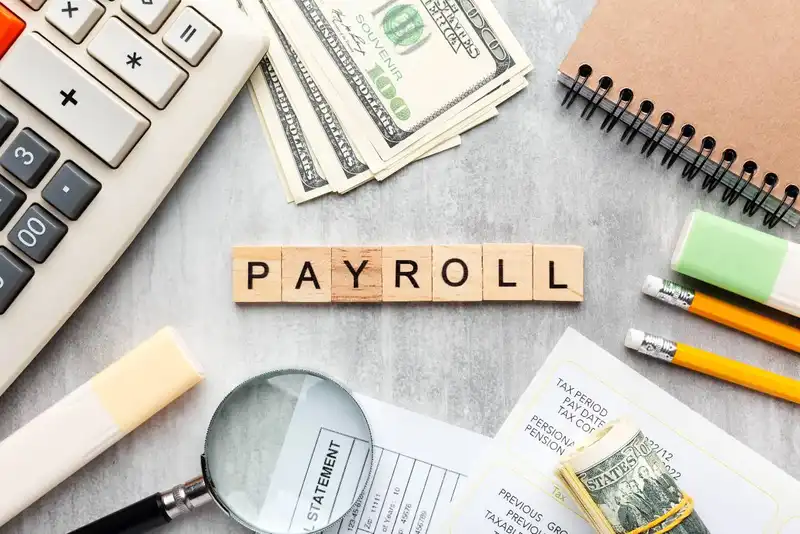What is labor forecasting and how does it help restaurants?
Labor forecasting uses historical sales data and other factors to predict busy times, helping restaurants schedule the right number of staff. This reduces unnecessary labor costs while ensuring excellent customer service during peak hours.
9 Essential Workforce Management Tools Every Restaurant Needs
Workforce Challenges in Restaurants
Managing a restaurant team can be tough. From making sure everyone shows up on time to handling last-minute shift changes, there's a lot to keep track of every day. Many restaurant owners and managers spend hours each week dealing with scheduling, payroll, and other staff-related tasks - time that could be better spent improving service or growing the business.
That's where workforce management tools come in. These are simple software tools that help with things like creating work schedules, tracking employee hours, handling payroll, and keeping up with labor laws. They help reduce mistakes, save time, and make life easier for both owners and staff.
According to the National Restaurant Association, labor is one of the biggest expenses for restaurants - usually around 30% to 35% of total costs. Using the right tools can help bring those costs down by preventing overstaffing, avoiding overtime, and making sure everyone is working the right shifts.
1. Scheduling Tools

Creating a work schedule might seem simple, but in a restaurant, it can quickly become complicated. You have to consider employee availability, shift preferences, time-off requests, and making sure you're not over or understaffed on busy or slow days. Without the right tools, this often leads to confusion, missed shifts, and frustration for both managers and employees.
Scheduling tools help make this process easier. They allow managers to plan out shifts based on business needs and staff availability. Instead of writing everything down or using spreadsheets, schedules can be built in one place and shared with the entire team. This means employees know exactly when they're working and can easily ask for changes if needed.
The main benefits of scheduling tools include
1. Matching labor to demand - more staff on busy days, fewer on slow days to control costs.
2. Tracking schedule changes like shift swaps or call-outs, giving managers a clear view.
3. Improving employee satisfaction by providing schedules in advance and respecting their time.
Good scheduling not only keeps the kitchen and floor running smoothly - it also keeps employees happy. When staff know their schedules ahead of time and feel their time is respected, it builds trust and helps reduce turnover, which is a big issue in the restaurant industry.
All in One Workforce Management Solution
Streamline Your Restaurant with Altametrics
2. Time & Attendance Tracking
Keeping accurate records of when employees start and finish their shifts is critical for any restaurant. Without clear tracking, mistakes happen - people might accidentally work extra hours, or some hours may go unrecorded. This can lead to paying more in wages than necessary or, worse, disputes with staff over their hours.
Time and attendance tracking tools help solve this problem by providing a simple and reliable way to record employee hours. Instead of relying on paper timesheets or manual punch clocks, these tools use methods like mobile clock-ins, PIN codes, or fingerprint scans to ensure each employee's hours are recorded correctly.
The main benefits of time and attendance tracking tools include -
1. Reducing time theft such as "buddy punching," keeping payroll accurate and fair.
2. Tracking breaks and overtime to help stay compliant with labor laws.
3. Saving time during payroll processing by automatically calculating hours and reducing errors.
Accurate time tracking saves time during payroll processing, too. Since hours are recorded digitally, managers don't have to manually calculate employee pay, reducing errors and speeding up payroll.
3. Labor Forecasting & Demand Planning
Knowing how many staff members you need each day is one of the biggest challenges in running a restaurant. If you schedule too many people, labor costs go up and profits shrink. If you schedule too few, your team gets overwhelmed, and customers may get poor service.
Labor forecasting tools help by using past sales data and patterns to predict how busy your restaurant will be on any given day or shift. This lets managers schedule the right number of employees to meet demand without wasting money.
These tools can look at factors like the day of the week, holidays, weather, and special events to improve predictions. For example, a sunny weekend might bring more customers, so more staff are needed.
The main advantages of labor forecasting tools include
1. Reducing unnecessary labor costs by avoiding overstaffing.
2. Improving customer service by having enough staff during busy times.
3. Helping managers plan ahead and avoid last-minute schedule changes.
Using labor forecasting tools helps restaurants balance costs and service quality, leading to happier customers and a healthier bottom line.
4. Payroll Management Tools

Payroll is one of the most important but time-consuming parts of managing a restaurant. Calculating wages, tips, taxes, and deductions by hand can lead to mistakes and delays. Payroll management tools help automate this process, making it faster and more accurate.
These tools collect employee hours from your time tracking system and calculate pay based on hourly rates, overtime, and tips. They also handle tax withholdings and generate reports needed for tax filing.
The main benefits of payroll management tools include
1. Reducing errors in wage calculations.
2. Ensuring employees are paid on time.
3. Simplifying tax reporting and compliance.
By automating payroll, managers save time and reduce stress during pay periods. This helps keep employees happy and avoids costly payroll mistakes.
5. Communication & Team Collaboration
Clear communication is key to running a successful restaurant. When managers and staff can easily share updates, swap shifts, and get important announcements, it helps avoid confusion and keeps everyone working well together.
Communication tools designed for restaurants bring all team messages into one place. Instead of relying on phone calls, texts, or paper notes, staff can check schedules, confirm shift changes, and receive updates instantly. This saves time and reduces mistakes.
These tools also make it easy for employees to request time off or swap shifts with coworkers. Managers can approve changes quickly without paperwork or back-and-forth messages. This flexibility makes scheduling smoother and keeps the team happier.
The main benefits of communication and collaboration tools include
1. Centralizing messages and updates in one easy-to-access platform.
2. Streamlining shift swaps and time-off requests.
3. Improving team morale by making communication simple and clear.
Good communication creates a stronger team culture and lowers turnover, which is especially important in the fast-paced restaurant environment. When everyone knows what's expected and feels connected, work runs more smoothly and customers get better service.
6. Compliance & Labor Law Management
Restaurants must follow many labor laws related to wages, breaks, overtime, and scheduling. Keeping up with these rules can be difficult, especially when laws change or vary by location. Mistakes can lead to fines, legal trouble, and unhappy employees.
Compliance and labor law management tools help restaurants stay on the right side of the law by tracking important rules and alerting managers when there's a risk of violations. For example, these tools can warn if an employee is close to working too many hours or missing a required break.
They also help enforce rules around overtime pay and prevent scheduling practices that are not allowed, such as back-to-back shifts without enough rest time.
The main benefits of compliance tools include
1. Reducing the risk of costly fines and lawsuits.
2. Ensuring employees receive proper breaks and overtime pay.
3. Making it easier for managers to follow local and federal labor laws.
By using these tools, restaurants can protect themselves and create a fair workplace. Employees feel respected when their rights are honored, which helps improve retention and workplace morale.
7. Onboarding & Training Tools
Bringing new employees into your restaurant and getting them trained quickly is essential to keeping operations running smoothly. Traditional onboarding can involve lots of paperwork and time-consuming manual processes, which can slow down new hires and frustrate managers.
Onboarding and training tools help simplify this by digitizing forms, training materials, and schedules. New employees can complete paperwork online before their first day and access training videos or guides whenever they need. This speeds up the onboarding process and helps new team members feel more prepared.
Training tools also make it easier to track progress and ensure everyone has the skills they need. Managers can assign specific training modules, monitor completion, and provide feedback all within one system.
The main benefits of onboarding and training tools include
1. Reducing paperwork and administrative tasks for managers.
2. Helping new hires get up to speed faster with accessible training materials.
3. Tracking employee progress and improving overall staff skills.
Using these tools helps restaurants build a stronger, more skilled team and reduces mistakes caused by lack of training. It also shows employees that the restaurant values their development, which can improve job satisfaction and retention.
8. Performance Monitoring & Labor Analytics
Understanding how your team is performing is important for running a successful restaurant. Without clear insights, it's hard to know where improvements are needed or how labor costs are affecting your profits.
Performance monitoring and analytics tools gather data from scheduling, time tracking, and sales to provide a clear picture of employee productivity and labor costs. Managers can see which shifts are most efficient, how much labor is spent compared to sales, and identify trends over time.
These tools help spot areas where the restaurant can improve, such as reducing overtime or increasing staff during busy times to improve service.
The main benefits of performance monitoring and analytics tools include
1. Tracking labor costs as a percentage of sales to control expenses.
2. Identifying productivity trends and areas for improvement.
3. Providing data to make smarter scheduling and staffing decisions.
By using this information, restaurant owners can make informed choices that balance labor costs with quality service. This leads to better customer experiences and a healthier bottom line.
9. All-in-One Workforce Management Platforms
Many restaurants are turning to all-in-one workforce management platforms to simplify operations. These platforms combine scheduling, time tracking, payroll, communication, compliance, and analytics into one easy-to-use system.
Using a single platform helps avoid the hassle of juggling multiple tools that don't always work well together. It keeps all employee data in one place, making it easier for managers to oversee the team and make quick decisions.
The main benefits of all-in-one platforms include
1. Centralizing all workforce management tasks in one system.
2. Reducing errors and saving time by automating manual processes.
3. Improving communication, scheduling, and compliance through integrated features.
For restaurant owners looking to streamline staff management and improve efficiency, an all-in-one solution can be a game-changer. It not only saves time but also helps control labor costs and boost employee satisfaction.
If you're looking to simplify workforce management and gain full control over scheduling, time tracking, payroll, and labor costs, Altametrics is the all-in-one solution designed specifically for restaurants. Altametrics offers a comprehensive platform that brings together all these tools in one place, helping you keep your team organized, reduce labor expenses, and run your business more smoothly.
Learn more about how Altametrics can transform your restaurant's workforce management by clicking "schedule a Demo" below.
Achieve More with Less Hassle!
Integrate, Manage, and Drive Results with Altametrics









































































































































































































































































